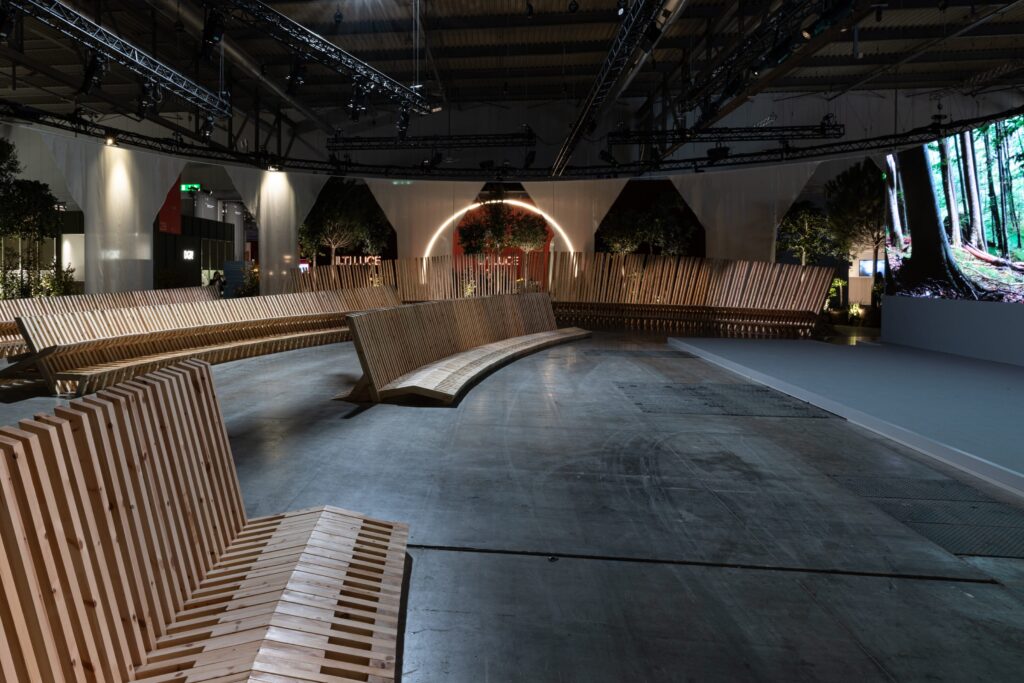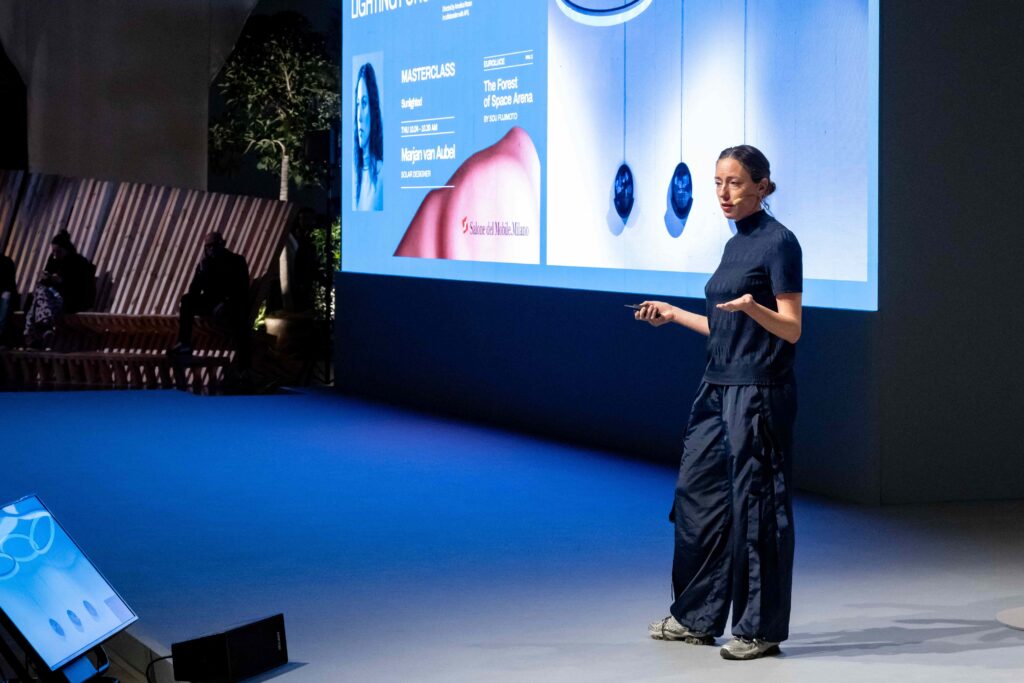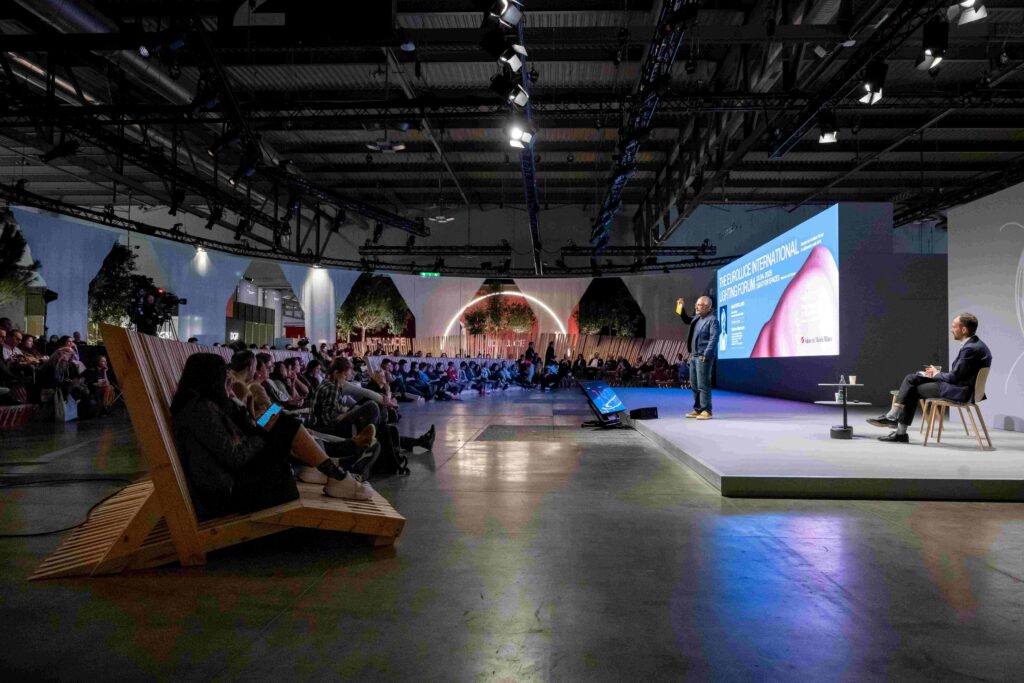Cover photo: ph. ®Saverio Lombardi Vallauri – Salone del Mobile Milano
The International Lighting Forum opened yesterday at Euroluce 2025, curated by Annalisa Rosso in collaboration with APIL–Associazione Professionisti dell’Illuminazione. The program is titled Light for Life. Light for Spaces features six masterclasses, two panel discussions, and two workshops hosted inside The Forest of Space Arena (Pavilion 2), designed by Sou Fujimoto and curated by VIV Arts. Lighting designers, astronomers, psychologists, and researchers are invited to share their visions and insights on the future of light.
On day one, we attended two masterclasses: the first by Marjan van Aubel, a Dutch Solar Designer, and the second by Stefano Mancuso, plant neurobiologist and director of the International Laboratory of Plant Neurobiology at the University of Florence.

Opening of the Euroluce 2025 Masterclasses
The forum began with moderator Ed Stocker, Europe Editor-at-Large at Monocle, who introduced remarks by Maria Porro, President of Salone del Mobile.Milano, followed by Carlo Urbinati, President of Assoluce. As they explained, the forum was born from conversations with exhibitors and professionals to explore the design of light and its cultural and emotional dimensions. «We want to understand what makes a good lighting project», said Urbinati, «by considering all roles involved and the deeper meaning of light when designed with awareness».
Marjan van Aubel – Sunlighted
The first masterclass was given by Marjan van Aubel, who shared her design journey, starting naturally with the sun. «Every hour, the sun provides enough energy to power the planet for a year… Everything exists because of the sun».
She began with Sunne, a lamp funded through Kickstarter that absorbs solar energy during the day and releases it at sunset in a customizable color palette that mirrors natural sunlight. Projects like Current Table and Current Window followed, both designed to store energy indoors. She later co-founded the Solar Movement with Pauline van Dongen and strategist Pallas Agterberg—an initiative promoting solar design’s cultural value, accessibility, and potential.

From this, the Solar Biennale was born—a recurring event that raises awareness about solar energy, which will remain available to humanity for the next 5 billion years. The first edition took place in the Netherlands in 2022, supported by the Nieuwe Instituut and Dutch Design Week. The second edition, currently hosted at MUDAC (Museum of Contemporary Design and Applied Arts) in Lausanne, includes Soleil·s, a major exhibition open through the autumn equinox of 2025. Van Aubel emphasized that these initiatives aim not only to promote awareness but also to trigger new collaborations and innovation in technology, helping make solar energy more affordable and accessible for all.

Stefano Mancuso –Nutrirsi di luce (Nourish Oneself with Light)
The second masterclass came from Stefano Mancuso, who shifted the spotlight to plants—though he reaffirmed van Aubel’s key message: We live because of the sun, and plants are the essential link that makes life possible. Through photosynthesis—a still-mysterious process—chloroplasts capture sunlight and transform it into nourishment. The chloroplast, he explained, is the conduit between light and life.

He closed with a powerful observation: science has long focused on animals and humans—predators by nature—even though they represent less than 0.3% of Earth’s biomass. Plants, by contrast, are autotrophs: they thrive on light and flourish through complex networks of symbiosis with fungi, bacteria, insects, and other plants. This ecological reflection offers a radical shift in how we relate to light and our planet.
